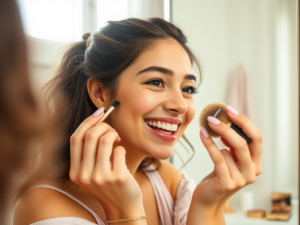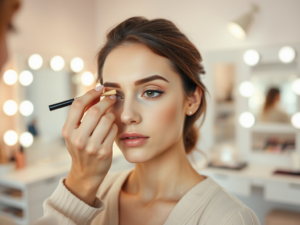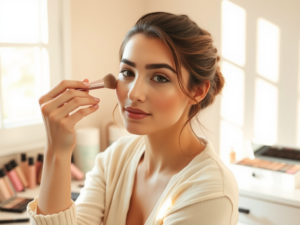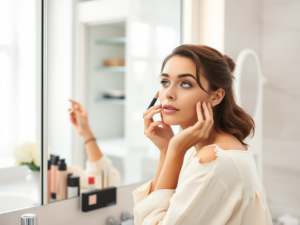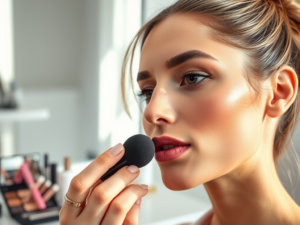Where Does Skincare Go After You Apply It?
Understanding the journey of skincare products post-application is essential for maximizing their benefits. After you apply a serum, cream, or lotion, they do not simply sit on the surface of your skin; instead, they penetrate and interact with your skin layers to deliver hydration, nourishment, and protection. This article explores the absorption process, the role of the skin barrier, and how different products behave once applied.
The Skin Barrier: Your First Line of Defense
The skin barrier plays a crucial role in determining how skincare products function after application. This outermost layer, known as the stratum corneum, consists of dead skin cells and lipids that work together to retain moisture and filter out harmful substances. When you apply a product, the skin barrier regulates how much of it can penetrate deeper layers.
Here are some critical aspects of the skin barrier:
- Hydration: The barrier helps maintain moisture levels, preventing excessive water loss.
- Protection: It acts as a shield against environmental stressors, irritants, and pathogens.
- Absorption rate: The integrity of the barrier influences how quickly and effectively a product can be absorbed.
Understanding your skin barrier’s function allows you to choose products that optimize penetration without compromising barrier health. Additionally, factors such as age, skin type, and environmental conditions can affect its efficiency.
How Skincare Products Are Absorbed
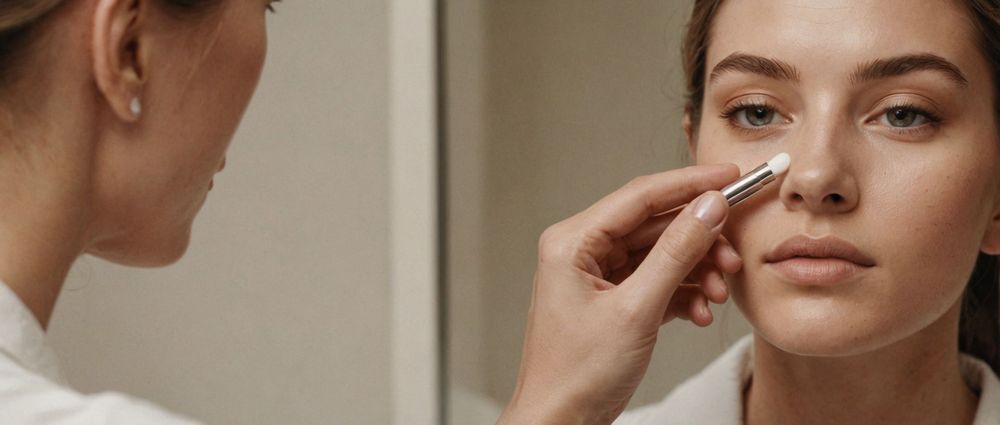
Once a product is applied, the next step is absorption. This process varies depending on the formulation and ingredients of the product. Water-based products, like gels and serums, tend to absorb quickly, while oil-based products may linger on the surface longer before penetrating.
Here’s how the absorption process typically unfolds:
- Surface application: Initial application involves the product sitting on the skin, allowing for immediate hydration and protection.
- Penetration: Ingredients begin to move through the stratum corneum and enter the deeper skin layers.
- Interaction: Active ingredients interact with skin cells, promoting various benefits like collagen production and cell renewal.
Products such as exfoliants or masks may penetrate deeper, depending on their intended effects and concentrations. The product’s molecular size and solubility also play pivotal roles in how effectively it can be absorbed by the skin.
The Layers of Skin: Where Skincare Products Go

Human skin is composed of three primary layers: the epidermis, dermis, and subcutis. After application, skincare products journey through these layers to exert their effects. Each layer serves a distinct purpose, and understanding these can help in choosing the right products for your skin.
Here’s a breakdown of where products typically go:
- Epidermis: The upper layer where most skincare products exert their influence, maintaining hydration and promoting cell turnover.
- Dermis: The middle layer where skincare can provide deeper hydration, collagen, and elastin support to improve texture and firmness.
- Subcutis: The deepest layer mainly comprises fat and connective tissue; while most topical products don’t reach this level, some formulations aim for deep soaking for various benefits.
Each layer’s condition impacts how well a product performs. For instance, if the epidermis is compromised, it may lead to diminished absorption of active ingredients, resulting in less visible effects.
Factors Impacting Product Absorption
Several factors influence how effectively skincare products can be absorbed into the skin. Understanding these variables can help tailor your skincare routine for optimal results.
Some essential factors include:
- Skin Type: Oily, dry, combination, or sensitive skin may react differently to products, affecting absorption rates.
- Application Method: Techniques like massaging can enhance absorption, while just dabbing may lead to less penetration.
- Timing: Applying products on damp skin can enhance absorption, as moisture can facilitate better penetration.
Being mindful of these factors allows for more effective skincare application, improving the likelihood of enjoying the full benefits of your products.
Conclusion
In summary, after you apply skincare products, they embark on an intricate journey through the skin layers, penetrating and interacting with various components to provide their promised benefits. The skin barrier’s health and the characteristics of the product play crucial roles in determining how effectively substances can be absorbed. By understanding this process, you can make informed choices about skincare routines that suit your skin type and conditions, ultimately leading to healthier and more radiant skin.
FAQs
1. How long does it take for skincare products to absorb?
While absorption can vary by product type, most are absorbed within a few minutes. However, heavy oils and creams may take longer.
2. Can I layer multiple skincare products?
Yes, but it’s vital to layer them in the right order, generally starting from the lightest (serums) to the heaviest (creams).
3. Is it bad if my skincare products leave a residue?
In some cases, a residue may indicate that the product is not fully absorbed, which can occur with heavy formulations. It’s essential to choose products suitable for your skin type.
4. Does skin type affect how I should apply skincare?
Absolutely! Different skin types may require specific application methods and products for optimal absorption and effectiveness.
5. Should I apply skincare on dry or wet skin?
Applying products on damp skin can enhance absorption, especially for hydrating products. It is generally recommended for serums and lotions.



